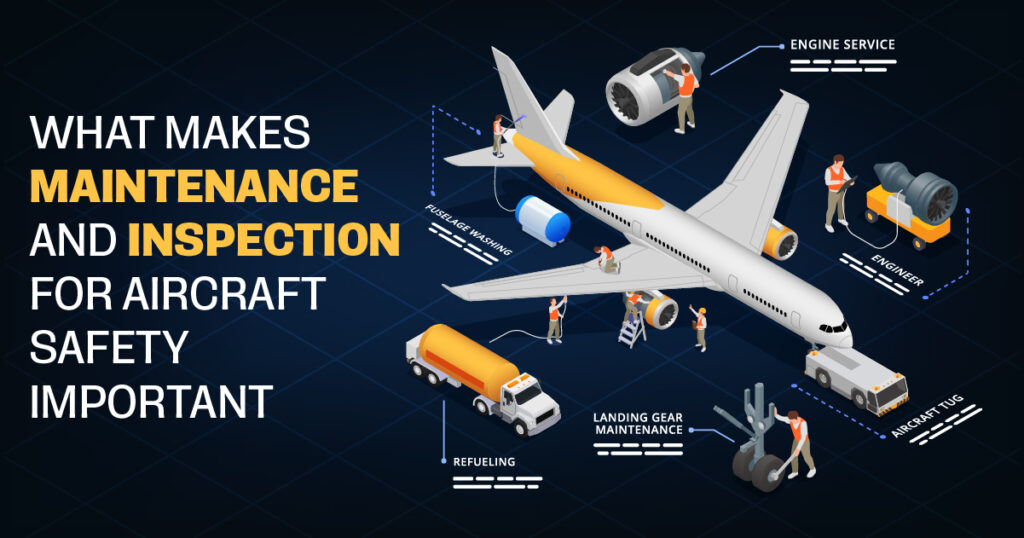Aircraft safety is important in aviation, and routine inspections of aircraft parts are very fundamental to ensuring flights are safe for passengers and crew. Every part of the aircraft should be duly inspected in this industry since the margin for error is extremely small. Early issue identification helps prevent potential accidents and saves lives. How to ensure safety with thorough and regular inspections of aircraft parts is highlighted below.
The Role of Aircraft Inspection in Safety
Aircraft inspection plays a very important role in ensuring safety in flight. Regular checking of the condition of an aircraft helps in identifying wear and tear, malfunction, or any potential failure that could pose a threat to flight safety. Frequency checks enable mechanics to fix small problems before they escalate into major ones. Since set standards in aviation, for instance, FAA, these inspections are a necessity as well as the obligation to permit an aircraft to be airworthy. The timely and correct inspection assures that a flight shall smoothly and safely be executed.
Routine Inspections on Schedule
A well-arranged periodicity in the aircraft maintenance schedule will permit aircraft safety to be maintained. Pre-flight checks will confirm immediate airworthiness, while major inspections will be carried out after a number of flying hours or after certain periods of calendar time. The routine maintenance checks’ procedures, such as daily, weekly, and monthly inspections, should be specified and followed by the certified professional. This routine helps in the early detection of wear and tear, thus enabling them to be repaired in due time and averting the risks of sudden failure during flight.
Emphasis on Important Parts of the Aircraft
Among all the aircraft parts, some key ones essentially determine the overall safety of any flight. The inspection should focus more on the prime components, such as the engine, brakes, landing gear, and navigation systems. The engine should undergo an inspection process, which includes fuel and oil leak detection, corrosion, and wear. At the same time, the brake and landing gear are subject to hydraulic system performance and structural checks. With a view to the general condition of the aircraft parts-the fuselage, the wings, and control surfaces- one ascertains whether any cracks or other faults occur that might influence the aircraft’s flying characteristics.
Technician Training and Certification
A critical component of any successful inspection includes that the technicians are trained and qualified to inspect and, when required, repair parts on aircraft. Proper training will enable the facility to maintain personnel for the detection of minor problems that will affect safety. For example, a certified aircraft maintenance technician knows how to determine the structural condition of the plane, whether any fatigue is occurring in the engine parts, and whether everything is functioning, among others. Moreover, even with the best possible inspection, without having the right qualifications and knowledge, it would not be possible to detect key issues. For this reason, continuous education and certification are of great importance in keeping technicians abreast of developments in inspection techniques and aviation safety standards.
Keep Detailed Records for Accountability
Records detailing all inspections, repairs, and replacement parts keep everything accountable and traceable. These records show the history of `the condition’ of the aircraft, helping technicians track the recurring issues and better predict some of their failures. The documents also help to provide evidence that such necessary checks for safety have been performed and may be essential in complying with regulations and insurance requirements. The maintenance teams must document everything, from small repairs to complete overhauls, in such a way that any inspection or work conducted on the aircraft is traceable should there be future investigations or audits.
Employ Advanced Technology in Inspections
Advanced technology should be used during the inspection of aircraft parts for greatly improved safety. Infrared thermography, ultrasound, and automated visual inspections with the aid of computers can show defects not easily visible to the naked eye. These would include, for instance, non-destructive tests of ultrasonic waves used in finding fissures or weak parts in an aircraft without destroying them. These are the kinds of modern technologies that allow technicians to go further and reveal problems that may not have been visible by old traditional methods. Integration of technology in processes speeds up and raises accuracy in the inspections that need to be conducted for safe flights and efficient operations.
Conclusion
One of the mainstays of aviation safety is the regular inspection of aircraft parts. On schedule, following the most important aircraft components, using advanced technology in inspections-the aviation professional will make sure that each flight is as safe as possible. Well-trained technicians, proper record-keeping, and adherence to the safety protocol continue to play a great role in reducing risks and preventing malfunctions. For this reason, and in a highly safety-desiring sector, there needs to be regular inspection of aircraft parts to prevent or avoid accidents.


